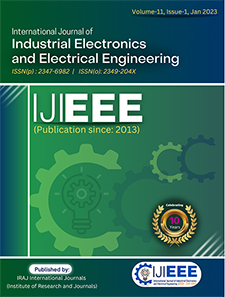Publish In |
International Journal of Industrial Electronics and Electrical Engineering (IJIEEE)-IJIEEE |
 Journal Home Volume Issue |
||||||||
Issue |
Volume-3, Issue-9 ( Sep, 2015 ) | |||||||||
Paper Title |
Comparative Analysis Of Wireless Indoor Radio Propagation Models Using Ultra-Wideband (UWB) Technology | |||||||||
Author Name |
Kartik Ramesh Patel, Ramesh Kulkarni | |||||||||
Affilition |
PG Student, Department, Professor, Department of Electronics and Telecommunication, V.E.S. Institute of Technology, Chembur | |||||||||
Pages |
10-17 | |||||||||
Abstract |
Over the coming decades, high-definition situation ally-aware networks have the potential to create revolutionary applications in the social, scientific, commercial, and military sectors. Ultra wide bandwidth (UWB) technology is a viable candidate for enabling accurate localization capabilities through time-of-arrival (TOA)-based ranging techniques. It is difficult to model indoor mobile radio channel because the channel parameters varies significantly. The indoor radio channel depends heavily on factors which include building structure, layout of rooms, and the type of construction materials used. In order to understand the effects of these factors on electromagnetic wave propagation, it is necessary to recall the three basic mechanisms of electromagnetic wave propagation -- reflection, diffraction, and scattering. In this paper three types of indoor radio propagation models are analyzed at ultra wideband frequency range and results are compared to select best suitable model for setting up indoor wireless connectivity and nodes in typical office, business and college environments and WPAN applications. Keywords - Path loss exponent, Wireless radio propagation models, UWB technology, indoor environment, Blockage. | |||||||||
| View Paper | ||||||||||